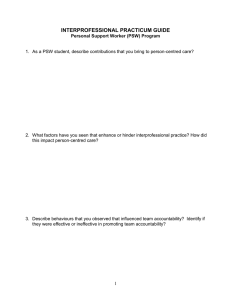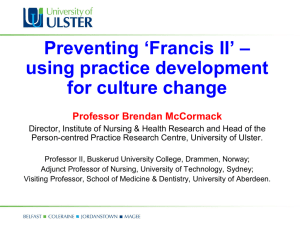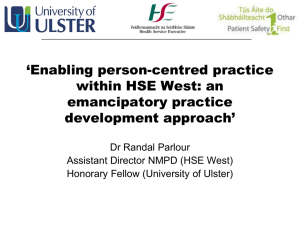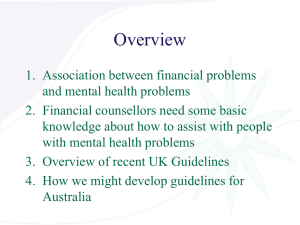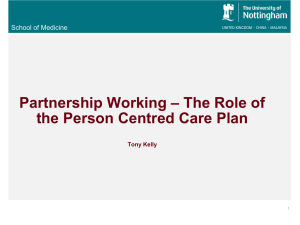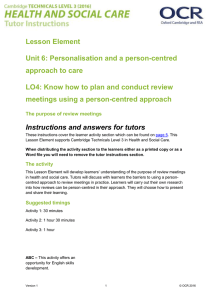Person-centred Practice Index
advertisement
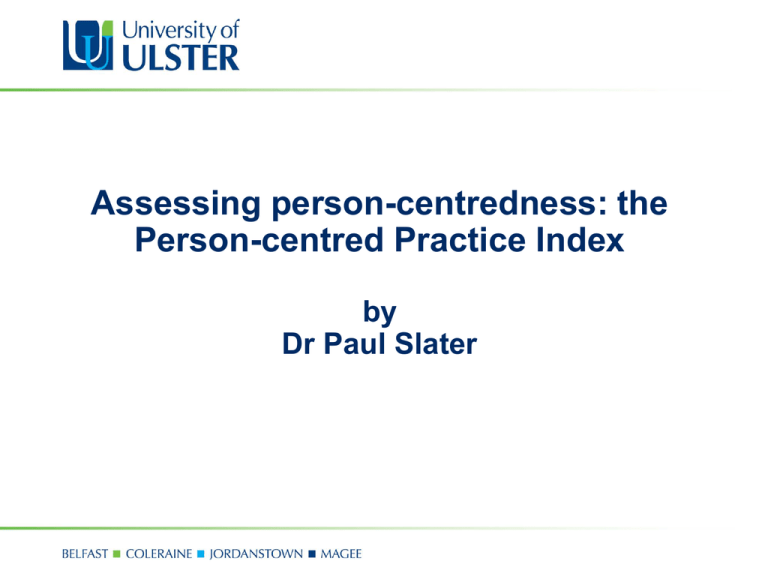
Assessing person-centredness: the Person-centred Practice Index by Dr Paul Slater Background Person-centred Practice Evidence relating to Person-centred Practice A dearth of psychometrically acceptable instruments to measure Person-centred Practice Background The Proxy measures: PCNI/PCCI tools measured: 1. 2. 3. 4. Work Stress Job Satisfaction Organisational Traits Perceptions of caring Proxy measures – not direct measures Background Summary Need to develop a tool that effectively measures person-centred practice Establish the psychometric properties of the instrument PCPI Development Instrument Design: 5 Stage Process 1. 2. 3. 4. 5. Exploration of Theoretical Principles Mapping to sample (Delphi technique) Questionnaire development Testing for reliability and validity Amendment and acceptance Person-centred Practice Framework (PCPF) Delphi Technique Two stages: 1. To gain agreement on the 17 definitions of PCPF 2. Gain consensus on questionnaire items aligned to the definitions Delphi Technique Definitions generated Sample: International Expert Panel (n = 36) 1. 2. 3. 4. Recognised Expert in the field At least one publication in area Willing to participate Expert in questionnaire development (stage II only) Delphi Technique Definition rated on 4-point Likert scale Consensus achieved at 80% (Keeney et al 2011) Median of 3.25 (Green 1982) Accepted definitions removed at each round Consensus Round 1 - 11 definitions accepted (n = 26) Round 2 – 2 definitions accepted (n = 21) Round 3 – 4 definitions accepted (n = 19) Item generation 108 potential items generated PCPRG and Expert Panel (Research Week) 5-point Likert Scale “How well the items accurately measure the definition” Response rate n = 26 14 items removed: The Person-centred Practice Index (PCPI) Maps directly to PCPF Comprises 94 closed question items Measuring 17 Constructs Rated on 5-point Likert Scale The Person-centred Practice Index (PCPI) Currently testing psychometric properties: • Large scale study in 4 Trusts • Registered Nurses • Finalise instrument items Initial findings very encouraging • Strong measures of reliability and validity • Questionnaire available Nov 2013



